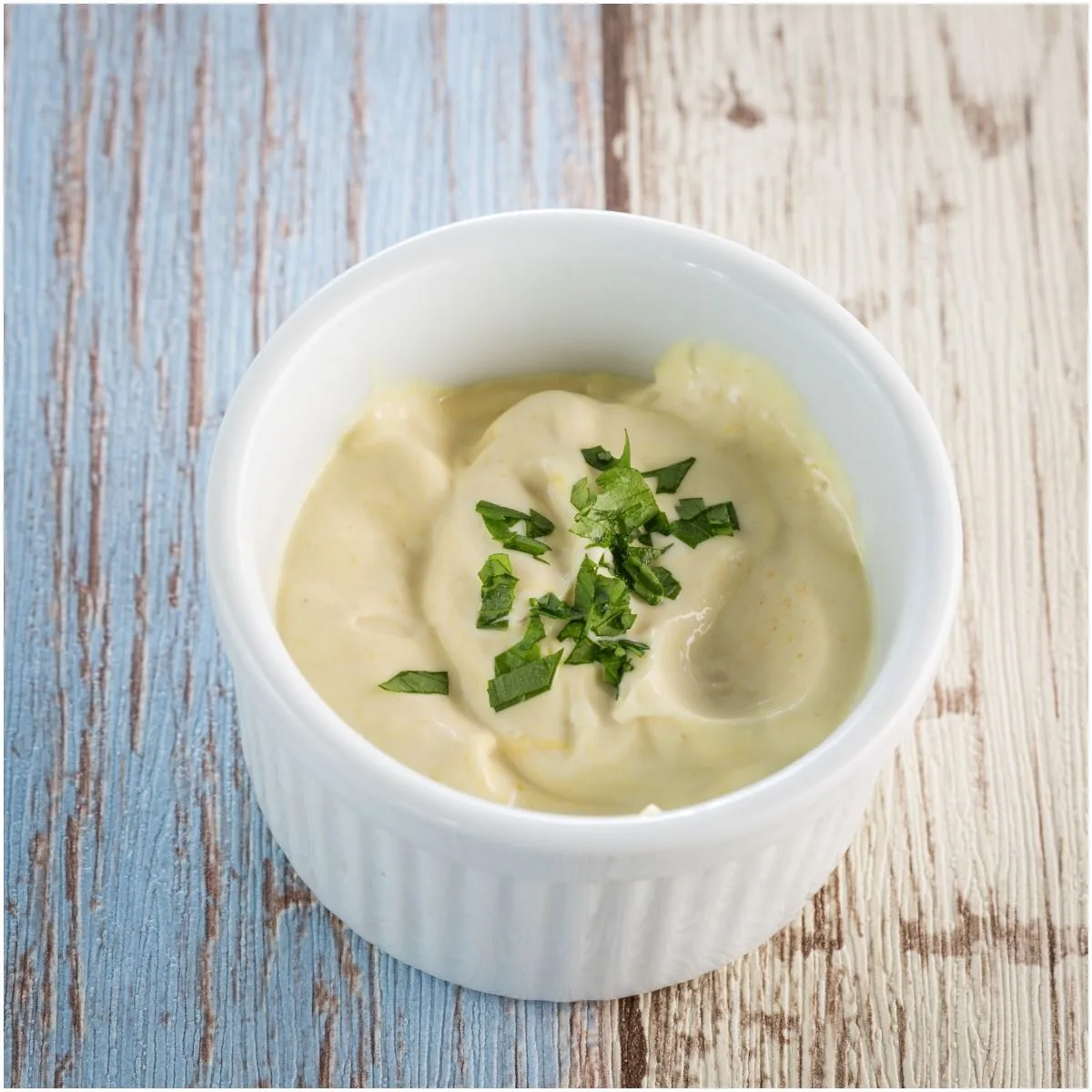Gellan gum is a water-soluble anionic polysaccharide that is produced by the bacteria Sphingomonas elodea or Pseudomonas elodea. This gelling agent can be used to produce a wide variety of interesting textures.
It was first discovered by Kelco in 1977 and was first approved for use in food in 1988.
1988 was also the year of its approval for food use in Japan. The US Food and Drug Administration has not given gellan gum the Generally Recognized As Safe status, however, it has approved its use in foods. In the European Union, it is labeled as E number E418.
The uniqueness of gellan gum is the ability to suspend while contributing minimal viscosity via the formation of a uniquely functioning fluid gel solution with a weak gel structure.
Is Gellan Gum Vegan?
Yes. Actually, it is commonly used in many of your favorite vegan or vegetarian drinks and foods.
Health Benefits & Uses
It is typically used in molecular gastronomy to create unique textures that can be served hot and to create numerous fluid gel textures. For instance, it is used in plant-based milk to keep plant protein suspended in the milk.
Moreover, it can be easily processed into transparent gels which are resistant to heat.
According to the data, it has an influence on the makeup of the gut bacteria. Moreover, some studies have concluded that it can be effective in lowering LDL cholesterol as well as in avoiding blood sugar spikes. It can also be used as a laxative.
READ MORE: Fanta vs Crush
Substitutes
This type of gum can be substituted with the following gums:
#1 Gum Arabic
It is produced from the sap of the Acacia Senegal tree, a plant native to parts of Pakistan, Africa, and India. Gum arabic is usually added to foods for many purposes, like – to stabilize, thicken, and to help water and oil mix together.
In addition, thanks to its high soluble fiber content, gum arabic may help keep blood sugar in check, lower bad cholesterol levels, aid in the treatment of digestive disorders, and protect against diabetes.
#2 Xanthan Gum
Xanthan gum is a complex exopolysaccharide that is used as a stabilizing and thickening agent in a wide variety of food and industrial products.
#3 Tara Gum (E417)
It is a viscous soluble fiber that is extracted from the legume tree Caesalpinia spinosa, native to Peru.
Tara gum is used as a stabilizer and thickener in tortillas, dairy products (such as – cheese, cream, ice cream, yogurt), and canned legumes and vegetables.
Note – E417 is currently not listed as Generally Recognized As Safe by the US FDA, however, it has an “Adequate Daily Intake not specified” status by the Joint FAO/WHO Expert Committee on Food Additives.
READ MORE: Cheez-It vs Cheese Nips – Comparison
#4 Guar Gum
It is created by dehusking, milling, and sorting a type of legume called the guar bean (scientifical name – Cyamopsis tetragonolobus).
Guar gum is a common powdered product used to emulsify, stabilize, and thicken the texture of industrial products and certain foods, like – yogurts, bottled almond or coconut milk, fiber supplements, soups, and body lotions.
#5 Locust Bean Gum (Carob Gum)
It is obtained from carob bean (scientifical name – Ceratonia siliqua), a Mediterranean tree.
Locust bean gum is structurally similar to guar gum. Carob gum comprises mostly fiber. It is best known as a gelling and thickening agent added to many different foods.
In frozen products, like ice cream, carob gum slows down and reduces the size of ice crystal formation improving the mouthfeel of the end product.
Additionally, it is used as an additive in infant formulas.
READ MORE: Soursop vs Cherimoya – Comparison
Side Effects of Gellan Gum (E418)
E418 has been shown to bulk stool, which means it increases inflammation in the gut, possibly leading to an increase in the size of the stool. Other possible side effects include:
- nausea;
- excessive gas;
- bloating.
Allergy
Side effects of gellan gum can also occur if you are allergic to it as well. Discontinue intake of any food products containing E418 if you suspect an allergy.
Pregnancy & Breastfeeding

Syda Productions/Shutterstock
Not enough studies have been done to evaluate the safety of gellan gum supplements during pregnancy and breastfeeding.
READ MORE: Sprite vs 7UP For Upset Stomach – Differences
Food Sources

Dmitriy Gromov/Shutterstock
Common foods that may contain E418 include:
- non-dairy beverages such as almond, soy, coconut, or hazelnut milk;
- bread;
- protein powders and drinks;
- sweet baked goods;
- soft drinks;
- tortillas;
- frozen foods;
- salad dressings;
- sausages;
- cream cheeses (including Kraft’s popular brand “Philadelphia”);
- packaged deli meats;
- mayonnaise;
- dips;
- sweet cream;
- chocolates;
- candies;
- pastry icing;
- sour cream;
- cake frosting;
- yogurt;
- pie and dessert fillings;
- puddings;
- whipped cream;
- ice pops (popsicles);
- sorbets;
- milkshakes from fast-food restaurants;
- ice cream.
Featured image credit – Shutterstock
READ THIS NEXT: Maltodextrin In Food – Side Effects & Dangers
Sources https://link.springer.com/chapter/10.1007/978-3-642-27957-7_45 http://citeseerx.ist.psu.edu/download?doi=10.1.1.659.99 https://www.ncbi.nlm.nih.gov/pubmed/23618271 http://pubs.rsc.org/en/c7bm01101f#!divAbstract

Jen
Friday 8th of July 2022
It normally takes about 20 years for any kind of "food" or "drug" to amass enough data to truly begin to evaluate its effects on a population. Don't believe me? Look it up; see for yourself. Gellan Gum is a "natural-based product." So, it must be harmless, right? Well, PREMARIN, the SYNTHETIC estrogen replacement drug that's been on the market, mmm, ForEver, was also based on a "natural product," namely, PREgnant MAre's uRINe; and, it was once, for a long time, considered 'safe.' In fact, many 'harmful' products are "naturally-based."